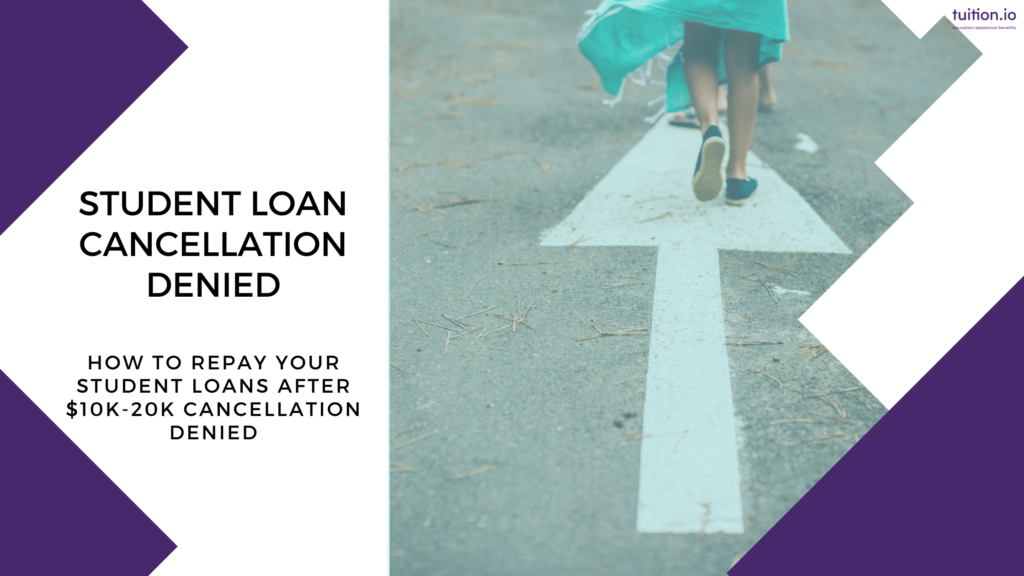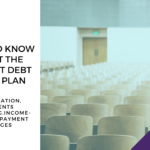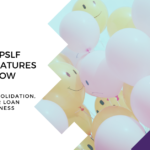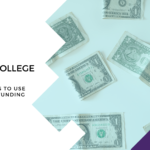Student loan cancellation of $10,000 or $20,000 was denied by the U.S. Supreme Court on June 30th, 2023. Many borrowers were counting on this cancellation. In addition to denial of cancellation, payments are set to resume in October 2023 with interest accumulating on September 1st, 2023.
The financial stress of student loan cancellation being denied and payments restarting can make it seem overwhelming to choose how to move forward and begin repaying your student loans. Don’t worry, you have options no matter what your goals are. Keep reading to learn more about how to repay your student loans now that student loan cancellation is denied.
Student loan cancellation is denied and payments are resuming. You likely need to do some student loan maintenance.
Step 1: Identify your student loan servicer.
One of the first steps you’ll want to take is to make sure you understand who your student loan servicer is. There have been a lot of transitions and loan movement while payments were paused so you might be surprised to find you’ll need to make payments to a company with a different name. You can log in to the federal student aid website to identify your servicer and view information about your student loans.
Step 2: Understand how much student loan debt you have and which repayment plan you’re enrolled in when payments resume.
Once you’ve identified your student loan servicer, you can log in to their website and view even more information about your student loans. Remember your student loan servicer is the company who processes payments. You will get important information from them regarding billing and payment due dates.
If your repayment plan doesn’t work for you, you have different options and can change at any time for free.
Deal with defaulted student loans by taking advantage of the fresh start program.
If you have federal student loans that are currently in default, you can take advantage of the fresh start initiative. This initiative allows borrowers to access federal student aid, restore the ability to rehabilitate defaulted loans, stop collections, and minimize the impact on your credit score.
Consolidate any outstanding FFEL loans to Direct before 12/31/2023 to take advantage of one time account adjustments.
Consolidation is especially important if your student loans are >20 years old. Consider applying for a Direct Consolidation Loan before 12/31/2023 to maximize payment count across all loans.
Even though cancellation has been denied, there are other paths to forgiveness. Income-driven plans are the key.
If making student loan payments is going to be difficult to afford, consider income-driven payments. Under income-driven repayment plans (IDR) payments can be as low as $0/month based on your income and help you qualify for loan forgiveness. Below is a summary of the current state (as of 7/5/23) of income-driven plan options. The summary can help you understand what you need to do before payments restart in October.
Pay As You Earn (PAYE)
- Payments under this plan are 10% of discretionary income and capped at no more than 10 year standard payment
- Discretionary income is defined as Adjusted Gross Income (AGI) – 150% of the federal poverty threshold
- You must demonstrate partial financial hardship to apply
- You must have Direct loans for your own education
- Your oldest loan must be from 10/01/07 or later
- 20 years until loan forgiveness for all loans
Revised Pay As You Earn (REPAYE)
- Payments under this plan are 10% of discretionary income but no cap on maximum payment so borrowers with high incomes may exceed 10 year standard payments
- Discretionary income is defined as Adjusted Gross Income (AGI) – 225% of the federal poverty threshold
- You do not have to demonstrate partial financial hardship to apply
- You must have Direct loans for your own education
- 20 years until forgiveness for undergraduate loans, 25 years until forgiveness for graduate loans
- There are additional important proposed changes to the REPAYE plan including a renaming to SAVE that will be outlined in a future blog post.
Income-based Repayment (IBR)
- 10 or 15% of discretionary (15% if new borrower before 7/1/14, 10% if new borrower on or after 7/1/14) and capped at no more than 10 year standard payment
- Discretionary income is defined as Adjusted Gross Income (AGI) – 150% of the federal poverty threshold
- You must demonstrate partial financial hardship to apply
- You must demonstrate partial financial hardship to qualify
- You must have Direct or FFEL loans for your own education
- 20 years until forgiveness if new borrower on or after 7/1/14, 25 years until forgiveness if new borrower before 7/1/14
Income-Contingent Repayment (ICR)
- 20% of discretionary income or what you would pay under a 12 year repayment term whichever is lower
- Discretionary income is defined as Adjusted Gross Income (AGI) – 100% of the federal poverty threshold
- You do not have to demonstrate partial financial hardship to apply
- This is the only IDR plan Parent PLUS loans qualify for, but parents must consolidate to a direct consolidation loan to participate
- 25 years until forgiveness
If you work in non-profit or government, consider Public Service Loan Forgiveness (PSLF).
You’ll need to participate in one of the income-driven repayment (IDR) plans mentioned above but will only have to make those payments for 120 months total while working full-time at qualifying 501(c)3 non-profit, government, or tribal employer. Then after 10 years of income-driven payments, your entire remaining student loan balance will be forgiven tax free.
There are a few more steps to PSLF:
- Don’t make any loan payments during the administrative forbearance.
- You don’t have to make any monthly payments through September 30th, 2023.
- All the months of non-payment during the temporary pause will count toward the required number of payments.
- If you’re pursuing Public Service Loan Forgiveness (PSLF) and have been working in qualifying employment full-time, you made 42 payments during this period of relief (March 2020 -Sept 2023).
- If you have been told in the past that you didn’t qualify for PSLF because you had FFEL loans or weren’t on the right repayment plan, take another look.
- The one time account adjustment counts any payments on federal student loans while you worked for a qualifying employer. But this is only for a limited time and you need to take action before 12/31/2023. Read Account Adjustments Bring You Closer to Student Loan Forgiveness to learn more.




